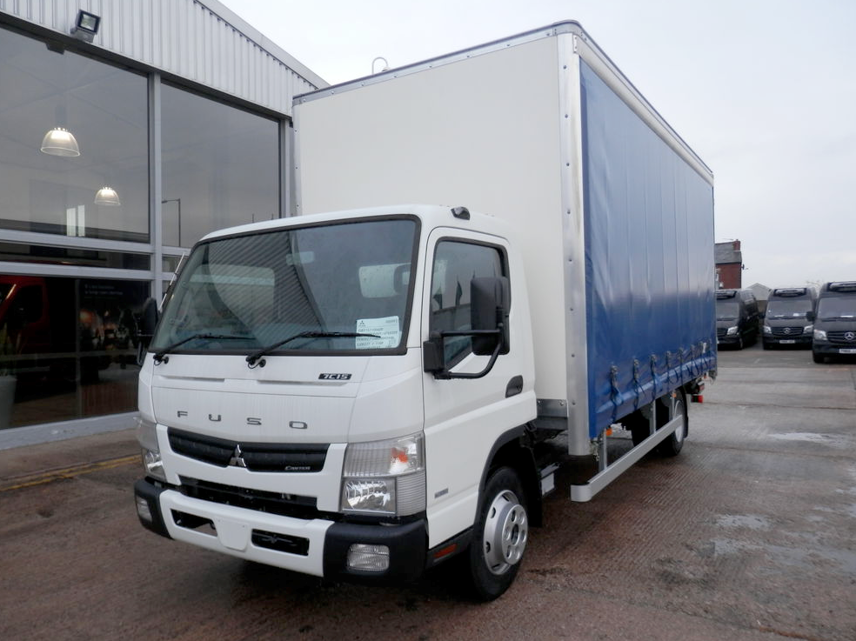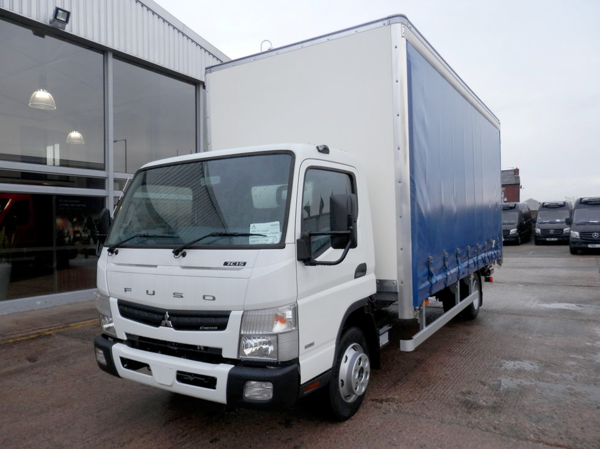Review
It often comes as a surprise to certain factions of the road transport community that the Daimler group offers a very viable alternative to the well-known and respected 7.5-tonne Atego. With that in mind, it would certainly come as an even greater surprise that the highest volume selling model within this whole global group is the Fuso Canter.
Of course, what wouldn’t come a surprise is the main reason for its success is based around the Asian market and the Mitsubishi heritage.
For Daimler’s Mercedes-Benz division to have two offerings at such a significant weight point could be an issue, but the Canter and Atego are so different in their approach to carrying 7.5-tonne GVW, it’s like comparing chalk with cheese.
The Atego is a classic European Mercedes-Benz heavy commercial vehicle built around a sturdy chassis and large cab whereas, as befits an Asian-based commercial vehicle, the Canter prizes lightweight in both chassis and cab as its key attributes.
As a result, it’s unlikely they would ever be competing on a customer’s 7.5-tonne wish list, with the most likely Canter users operating within the landscaping or delivery services, in the public service sector, construction or fridge sectors.
Canter is one of the rare models that straddles the light commercial vehicle sector at 3.5-tonne to the more medium sector around 8.5-tonne GVW, as well as a 4x4 model and an Eco Hybrid.
There are two types of cabin and six wheelbases at 7.5 tonnes GVW ranging from 2.8m to 4.75m, which allows for bodies of up to 7.2m in length. However, the main advantage of the Canter is not about body lengths, but payloads.
Here in the UK the typical 7.5-tonne will hover around the four-tonne body and payload allowance whereas Canter’s five-tonne-plus body and payload allowance (including 20 litres fuel/12 litres Adblue) offers a significant advantage. A reason to buy if payload is the key criteria.
At 7.5 tonnes there are two engine options, both extracted from the 3.0-litre, four-cylinder Euro 6 diesel from Fiat powertrains, rated at 150PS (110kW) and 175PS (129kW) at 3500rpm with 370Nm and 430 Nm torque at 1320 rpm respectively.
To meet the latest emissions standards, the Canter BlueTec 6 utilises exhaust gas recirculation (EGR), diesel particulate filter (DPF) and selective catalytic reduction (SCR) together with stop/start function as standard.
Behind the engine there’s a choice of either a five-speed manual or a six-speed Duonic dual-clutch automated gearbox (a world first for a truck of this size), with many operators apparently going for the auto option.
As mentioned there are six wheelbases and they are all mounted in a traditional manner, whereby the front and rear semi-elliptic laminated leaf springs with double acting shock absorbers and stabiliser bars help to give a high level of suspension and road handling.
All 4x2 Canter models offer ABS with electronic brake force distribution (EBD) and electronic stability programme (ESP) as well as ventilated 310mm diameter disc brakes as standard. Downhill braking is further supported by a retarder electronically-governed 50kW exhaust brake, helping to reduce usage of the service brakes.
Canter comes as standard with a day cab with a six-person crew cab available as an option. The day cab has a dual passenger seat which also has a clipboard and document tray and, with a flat dashboard, cross cab access is very easy.
Cab storage starts with overhead shelves, locking glove box, an area between seats, a pocket on the rear wall and very narrow pockets on the doors.
The parking brake is not the spring type normally found in a truck of this size but a more od a car parking brake which is located just by the side of the driver’s left hand armrest.
The cab is low down making entry easy via just two steps with an Isringhausen suspension seat with adjustable spring rate, lumbar support and arm rest helping create a good driving position.
The cab layout is simple, perfect for a day-based operation in an urban area, and that’s reflected in the cab interior; it’s minimalist, but sufficient. The dashboard is clear and flat, reminiscent of a 1990s’ design, but it suits the cab overall and has all the necessary features to operate efficiently.
In front of the driver, the instrument panel houses the speedometer on the left and rev counter on the right with a small LCD panel for the water temperature, etc.
On the left is the gear lever for the five-speed gearbox, digital tachograph and heating/ventilation system, all available in a compact space making them easy to reach.
With the cab sitting on top of the engine, it comes as no surprise that on start up the noise is louder than a typical European competitor but, after five minutes as the engine warms, this reduces to an acceptable level. One advantage of sitting low to the ground is the great all-round visibility offered aided by the heated rear view mirrors and wide angled side windows.
Driving in the heavy traffic in Bolton town centre, you quickly become aware of the Canter’s excellent turning circle and high manoeuvrability showing this truck enjoys the city. That shouldn’t be a surprise as its country, of origin Japan, is highly populated and full of narrow streets.
Although the 150PS engine is the lower of the two power ratings on the 3.0-litre engine, it doesn’t make the truck feel underpowered and the five-speed gearbox offers reasonable steps between changes. The green economy zone ranges from 1,000rpm to 2,000rpm and it’s not difficult to keep the engine within this zone between gear changes, helping to ensure an optimum level of economy.
The Fuso Canter is backed by a three-year full coverage warranty with unlimited mileage and service intervals at 25,000 miles or one year.

















